Feb 20, 2018 | advice, auction, coins, education
There are many ways to collect numismatics and there are many places that a collector can find items to add to a collection.
 Collecting can be an expensive hobby regardless of what is collected. Whether it is numismatics or comic books, one piece is never enough and there is always a desire to collect an entire set regardless of the parts that make up the set.
Collecting can be an expensive hobby regardless of what is collected. Whether it is numismatics or comic books, one piece is never enough and there is always a desire to collect an entire set regardless of the parts that make up the set.
When collecting numismatics, we know about the coin dealer, coin shows, and online auctions from the major auction houses and eBay. But did you know there were other online auctions that you can tap into to find collectibles with better prices?
There is an entire community of resellers working with estates, relocations, downsizing, and liquidation that offers a way to find bargains.
Estates are an easy concept to understand. Someone dies and the family, executor, or personal representative of the estate has the responsibility to clean out the home, apartment, or condominium of the decedent so that everyone else can move on. Regardless of how gentle we try to be, everyone dies and something has to be done with the stuff left behind.
This is where estate sale companies are a help. These companies are contracted to whoever is trying to sell off the estate and hold a sale of the goods. Some estate sales are held over one or two weekends. Buyers go to the house to see what is for sale and buy what they want.
Over the last few years, there has been a growing number of online estate auctions. Rather than holding a sale, the items are either staged in the home or in a warehouse and people bid online. Estate auctions have been extended to relocations, downsizing, and liquidation of seized properties and even commercial assets.
Online estate auctions work like any other online auction. You bid for the item you want and hope you win. When the auction is over, you pay for the item plus a buyer’s premium, similar to what you would pay if you were buying from an auction house. In most cases, the buyer’s premium ranges from 10-15 percent of the selling (hammer) price. In most cases, local sales tax is charged.
Although you can find bargains at these auctions, it is not always an easy process.
First, not every company works the same. Unlike eBay where there are consistent rules sellers have to abide by, estate auction terms and conditions can be very different than what you are used to. Before you bid, read the terms and conditions. If you cannot abide by them, do not agree to bid on the auction.
How do you agree to the terms and condition? Register on the auction site and click the button for that auction. Registration requires you to identify yourself including entering a valid credit card. When you agree to the terms and conditions of the auction, most companies will put a hold on your credit card for a set value to determine that the credit card is valid. These holds can range from $1-100. Remember this if you use a debit card. In most cases, your credit card will be charged for the purchases immediately up the close of the auction.
The auction platforms may be very different than what you are used to. These auction platforms take their cues from services offered by major auction houses and not eBay. Their catalog is a list of lots for sale that includes pictures an additional information. Not every item includes good pictures or descriptions and not every auction service uses their software to its best capabilities.
Some companies offer a live preview. If the auction is being staged onsite, then you can go to that site during the designated time and examine the items up for bid. Auctions held from warehouses usually hold multi-day previews. If you cannot attend a preview or if there is no preview offered, you have to rely on the pictures. If the picture does not give you the confidence you need to bid, pass on that item.
These auctions allow you to enter a maximum bid and will raise your bid price until someone outbids your maximum, similar to what you may be used to on eBay. One big difference is that most of these auctions use a soft close system. A soft close happens when a bid is received at the last minute of the auction. When a bid is received the end of the auction is extended. Most auctions will extend the end time 3-5 minutes to prevent sniping.
Most of these estate and liquidation auction services set their lots up with a low starting price. Usually, the opening price is $1.00 and sell with no reserve. Some have other practices that they use to protect the seller of higher-priced items. But this scenario can be a recipe for finding bargains. In one auction, I was able to purchase three Carson City Morgan Dollars in GSA holders for about 75-percent of than their Greysheet value even after sales taxes and buyer’s fee were added. I was then able to sell the coins to a client who paid their Greysheet value giving me a nice profit for the day.
Another issue you will have to work around is that many of these auctions do not provide shipping. If you read their terms it will say that if you win you will have to pick up your items at a specific place during the designated pickup time. If you want your items shipped you will have to work with a third-party shipping service such as the local Parcels Plus or UPS Store.
There have been mixed reports using third-party shipping services. Some are very good, contientious, and will take care of you but at a cost. There are others that are not very good and have been known not to pack the items well and pilfer from your winnings. There is no way to know the rating of the auction service’s recommended shipper. You may want to try to find online reviews of that shipper.
A few of these estate auction companies will provide shipping services. If you require shipping, you may have to do this as part of the registration or contact the company immediately following the close of the auction. Those companies that provide shipping will charge a service fee in addition to the postage.
Remember, the larger and more expensive the item, the more will be required for it to be shipped.
When purchasing anything from an estate auction, it is important that you read and understand their terms and conditions before you bid and buy. Each service has different terms and conditions that could turn your purchase into a nightmare. If you are careful, you can find bargains.
Where can you find these bargains?
This is where I give up the secrets that have allowed me to build a collectibles business. I have used these resources to travel the region to find cool items that have made a lot of people smile.
My first go-to resource is EstateSales.net. I have found no other resource with the most complete listing of every estate sale and auctions for whatever region of the country I am located. It is a free service for buyers. Either select your state or enter your zip code to find all of the sales in your area. Even if you are visiting your relatives out of town, enter their zip code and see if you can find some bargains.
Listings on EstateSales.net include the address and hours of the sale. If it is an online auction, it will provide a link to the auction site. Each sale page can include photos of the items for sale. While photos are not required, most listings include them. You can get a preview of the items for sale to help you decide whether it is worth the trip or the effort to bid.
They also have a mailing list you can sign up for that will send you sales in your selected region.
Using the listing on EstateSales.net, you will learn who some of the local auction companies are. You can either watch for their sales on EstateSales.net or go to their website and sign up for their mailing list. Some of these auction companies continue to have live, in-person auctions and it may be something you will consider attending.
Another place to find estate auctions is on the site that provides the auction services to the various companies. One of the largest services is HiBid.com.
HiBid is a great site for finding a lot of auctions in a lot of places and supports a few different auction formats including online only, live webcast auctions, absentee bidding, or just catalogs for auctions that will be live or even on another platform. They will allow you to search across auction companies and regions.
As I am writing this, there are 1,134 open auctions with 794 being internet online-only. Of those online-only auctions, there are 3,607 lots in the Coins & Paper Money category.
AuctionZip.com is another auction hosting service that is very auction company-centric. While you can search across auctions its model is to try to protect the propriety of the companies that use its site. Once you see the difference in the interface between HiBid.com and AuctionZip.com, you will understand why the former is more popular.
One nice feature about AuctionZip.com is that when you do a search it lets you look at the auctions open for a particular day. If you have time restrictions, it will allow you to better tailor your bidding times. This is good if you are traveling so that you do not have a conflict with the end of the auction.
LiveAuctioneers.com is a similar service but serves a more upscale audience. Their service has stricter requirements as to who can list auctions on their platform. What this does is provide better assurances for the buyer that they are dealing with a more established company. Currently, there are 7,780 items listed for auction in the Coins, Currency & Stamps category.
A feature of LiveAuctioneers.com, aside from its clean interface, is that they have a consignment service that helps connect you with an auctioneer that will help sell your items. If you have something that you want to sell at auction but do not know who to speak with, this is a good service to help get you started.
One of the oldest services is icollector.com. They are a strictly collectible market auction service. Although their catalog is smaller than the others listed, their listings are comparable in the collecting categories. iCollector.com may not be as elegant as other services, but they do have the inventory for you to look at. There are just under 15,000 lots of various numismatics. Their strength is that the numismatic categories are divided by country and type. Where other auctions make have a general category, iCollector.com has categories to allow you to narrow your search down to what your interest.
Last, but definitely not least, is Invaluable. Auction companies that use Invaluable are what could be classified as mid-to-upper range companies. These companies are more concentrated around art and furniture but have added collectibles and other categories likely to facilitate sales from companies that buy higher-end estates in order to keep them as clients. Most of the auctions on Invaluable are absentee bid auctions with some items available for immediate sale. As I write there, there are 20,485 lots available in the Coins, Money & Stamps category. In fact, over the last few weeks, gold and silver bars dominate the listings on the first page of the category.
Invaluable is also a site with a very clean interface that is very welcoming. They also divide their larger sections into individual categories so whether you are interested in US Coins or Ancient Coins, you can browse that section without clutter.
Since I started writing this article, I won several silver Chinese Panda coins from an online estate auction. Most of the coins were purchased at or below the spot price of silver even when adding the buyer’s premium. One of those coins that were purchased a little over the spot price is the very popular 2000 Panda that can sell for a lot of money. There are other coins that I purchased at less than market value.
Even though I am not a fan of third-party grading services, especially for modern coins, I will send these coins to one. Although I think all but one is genuine, and it is possible it was a pocket piece, as long as the 2000 and amake up of the pre-2000 silver Panda coins are genuine, I will more than makeup for the cost of the entire purchase plus the grading fees.
Now go out and find your own bargains!
Aug 15, 2017 | coins, education, grading
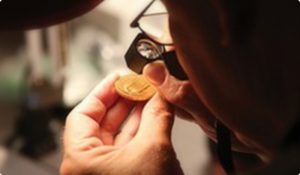 Over the last few weeks, I have been working on a few writing projects that include primers about collecting numismatics. While some of these articles have allowed me to repurpose blog posts, I have had to create some content not posted before.
Over the last few weeks, I have been working on a few writing projects that include primers about collecting numismatics. While some of these articles have allowed me to repurpose blog posts, I have had to create some content not posted before.
In the past, I posted a few including the series on small dollars and about Seated Liberty Dime Varieties. They were posted as regular articles because I thought they would be of general interest.
A few may not make for exciting reading but could be used as a reference for those interested. Last week, I added one of those articles rewritten for the blog and posted it under the Collector’s Reference menu.
“A Collector’s Guide to Understanding U.S. Coin Grading” is a simple overview of coin grading. It starts with a short narrative that explains the origin of coin grading and its standardization. It is not an extensive overview. It is just the basics to give a collector an idea of the evolution.
This is followed by three tables:
- Coin Grading Scale correlates the words with the expected grade that might be printed in an advertisement or on a grading service label along with a definition of what that grade means. These definitions were adapted from The Official American Numismatic Association Grading Standards for United States Coins edited by Kenneth Bressett. I own the 6th Edition but I am sure it has not changed much between then and the 7th Edition!
- Strike Quality is the attributes of a coin that signifies the strike and the wearing of the dies. Each of these designations begins with “Full” like “Full Bands” or “Full Steps.”
- Surface Quality is those grade attributes assigned to the quality of the coin’s fields. These are for proof coins designated as “Deep Cameo” or a business strike exhibiting “Proof Like” surfaces.
It ends with a section on a summary of the “eBay Coin Grading Policy.” There are aspects of their grading policy I did not know until I read eBay’s rules carefully.
If you find these types of write-ups helpful, let me know. I can convert some of the other guides into posts for the community.
Jul 13, 2017 | education, errors, US Mint, varieties
This is second article of a 2 part series:
A variety is a coin that differs from its basic design type in some distinctive way and is thus differentiated by collectors. Varieties are not errors. They are deliberate changes to the design whether it is to better define the design, adjust the design to strike better, or to add or change elements like dates and mintmarks.
A key difference between a variety and an error is that varieties are replicated for multiple strikes. Die changes, repunched mintmarks, repunched dates and over polishing of dies can reproduce the variety for the life of the die or until it is detected by Mint workers.
Nearly every series of coins has its own traceable die varieties that have been studied and catalogued by researchers. Researchers assign the varieties a number that is used by the third-party grading services to provide attribution to the variety on their holder.
-
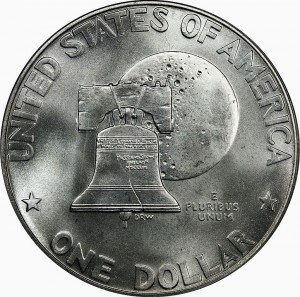
-
Bicentennial Dollar Type 1 (1975) Reverse
-

-
Bicentennial Dollar Type 2 (1976) Reverse
-
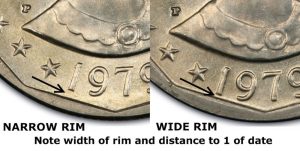
-
1979 Susan B Anthony Varieties
Variety collecting is a very specialized subject. If you are going to collect varieties, you should read the references to understand the characteristics of the varieties. Some of the more well recognized and documented varieties include:
| Catalog |
Coin Series |
Main or Initial Reference |
| Cohen (C#) |
Half Cents (1793-1857) |
American Half Cents – The “Little Half Sisters” by Roger S. Cohen, Jr. |
| Sheldon (S#) |
Large Cents (1793-1814) |
Penny Whimsy by Dr. William H. Sheldon |
| Fortin (F#) |
Liberty Seated Dimes (1837-1891) |
Liberty Seated Dimes – Die Varieties, 1837 – 1891, by Gerry Fortin |
| Overton (O#) |
Half Dollars (1794-1836) |
Early half dollar die varieties, 1794-1836, by Al C. Overton and Donald L. Parsley |
| Van Allen-Mallis (VAM#) |
Morgan and Peace Dollars (1878-1935) |
Comprehensive Catalog and Encyclopedia of Morgan & Peace Dollars, by Leroy Van Allen and A. George Mallis |
| Fivaz-Stanton (FS#) |
Varieties from the Cherrypickers’ Guide |
Cherrypickers’ Guide to Rare Die Varieties of United States Coins, by Bill Fivaz and J.T. Stanton |
Arguably, the most collected series by varieties are Morgan Dollars. VAM varieties and catalog numbers were introduced to the hobby by Leroy Van Allen and A. George Mallis who discovered the varieties while examining Morgan and Peace Dollars. Their book, Comprehensive Catalog and Encyclopedia of Morgan & Peace Dollars began a hunt that has seen hundreds of more varieties found and cataloged.
Most VAM varieties cannot be seen without magnification and detailed knowledge of what to look for. The primary resource for VAM collectors is the VAMworld website. Aside from listing the identified VAM varieties, there are instructions how to identify VAM varieties.
-
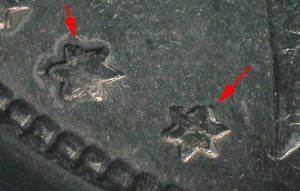
-
1878-P VAM-169 Quadrupled Stars (courtesy of VAMworld)
-
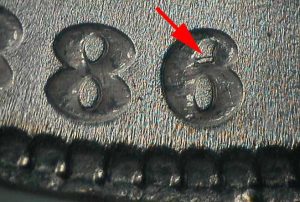
-
1886-P VAM-1A Line in 6, Slightly Doubled Ear (Image courtesy of VAMworld)
-

-
1921-S VAM-6A Doubled Stars & Motto & Upper Reverse, Die Scratch (Image courtesy of VAMworld)
The third-party grading services have an optional service that will identify VAM varieties on their holders. However, they do not recognize all VAM varieties. There are three sub-lists of catalogued VAM varieties that are recognized. These varieties are as follows:
- TOP 100: The 100 most significant VAM Varieties known
- HOT 50: A list of additional 50 VAM Varieties that collectors are interested in finding. Many of these varieties are scarce and have sold for significant premiums
- HIT LIST 40: A list of 40 new VAM Varieties that have been discovered since the publishing of the HOT 50 list
General searching for varieties and errors should consider picking up a copy of Cherrypickers’ Guide to Rare Die Varieties of United States Coins by Bill Fivaz and J.T. Stanton. The book comes in two volumes. Volume 1 covers die varieties of half cents through nickel five-cent pieces. Volume 2 covers everything else including gold and bullion issues.
Jul 12, 2017 | coins, education, errors, US Mint, varieties
This is first article of a 2 part series:

FDR dime struck on a nail (stand in for Festivus Pole)
A basic rule of thumb is that even though errors and varieties represent changes to the basic design of the coin, they differ in how they occur and the resulting appearance of the coin.
A Mint Error is the result of an issue with the manufacturing processes causing the coin to be damaged in some way. Errors can be the result in malfunction of the equipment, imperfect coining materials, or created by human error.
Even though modern equipment is supposed the make the striking process more consistent, when the manufacturing process involves striking billions of coins, there are bound to be a few errors. Coining machines have so many moving parts and everything has to work in concern, one variation in speed, force, vibration, or tilt can make the coins look very different than intended.
Then there is the human factor. Humans are imperfect beings subject to making mistakes. Even though the machines are supposed to help guide the humans to reduce mistakes, something can go wrong, especially in an operation that involves making billions of the product.
To help understand where some of the mint errors come from, they can be categorized as three different types: Planchet Errors, Die Errors, and Strike Errors.
Planchet Errors

1943 Lincoln cent struck on a copper planchet (Courtesy of CoinTrackers)
clipped planchet: Term used to describe a planchet that may have been cut incorrectly from the metal sheet. The clipped area may be curved if cut into the area where another planchet was cut out or straight if cut beyond the edge of the metal strip.
delamination: A form of planchet flaw caused by imperfections in the metal whereby a thin strip of the metal separates itself from the coin.
lamination or planchet flaw: Lamination is a type of error in the planchet that occurs when a thin layer of the metal splits or peals away from the surface of the coin.
off metal or wrong planchet: A type of error that occurs when a coin is struck on a planchet that it is not normally struck, such as striking of a quarter on a planchet that was supposed to be for a nickel.
Die Errors
A Die Error describes a defect caused by a flaw in the dies used to strike the coin. Types of Die Errors include:
cud: The area of a coin struck by a die that has a broken area across part of its surface. The result appears as a blob of metal on the surface of the coin.
die break or die crack: Fine raised lines can appear across the coin when something causes the die to break or crack. A cracked die opens a fine line in the design allowing the flow of metal to fill in the space when struck.
filled die: A type of error that appears on a coin when a foreign substance, such as grease, fills the elements of a die used to strike coins. A filled die error can also occur when the dies are polished to remove debris during the striking process. Modern minting processes have eliminated the polishing of dies but the problems with filled dies continue.
hub doubling: Refers to the doubling of the elements on a coin that was caused by the hub being pressed more than once into a die in different angles. Hub doubling occurs prior to the striking process when the dies are created. Master hubs are pressed into the dies to create working dies for the coining process. Mistakes in this process can result in the production of many coins with the error struck into them.
mule: A mule is a type of mint error that occurs when a coin is struck with two dies that were not intended to be used together.
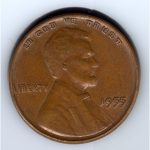
1955 DDO Lincoln Cent

1937-D 3-Legged Buffalo Nickel
The 1937-D Three-Legged Buffalo nickel occurred when a mint worker polished the reverse die of the Buffalo nickel too aggressively without checking his work. The result was the front-right leg of the buffalo being eliminated from the die. A few thousand were created before the Mint officials figured out they had a problem.
Strike Errors

Off-center 50 States quarter struck in Denver
broad strike: A coin that is struck in a way that expands beyond the boundaries of the collar. A broad strike can give the coin n flat or elongated look.
brockage: A type of striking error when the coin is not ejected properly from the press and causes the mirror image of the exposed design to be struck on the next coin.
capped die: An error in which a coin gets stuck on a die and remains stuck for successive strikes. Eventually, the coin forms a “cap” on the die and imparts its image on coins it strikes. When the cap falls off, it usually resembles a small bowl.
clashed die: One of the more interesting errors occurs when during the striking process, a malfunction prevents a planchet from being in place when the dies are forced together causing them to crash into each other. This leaves the design from either side on the other. Subsequent coins are then struck with the latent image of the other side pressed into the coin.
cracked die: An error that occurs when during the stress of striking coins, the die cracks across its face. When a cracked die strikes a coin, the metal flows into the crack that impresses a raised area in the coin that is not part of the design.
filled die: A type of error that appears on a coin when a foreign substance, such as grease, fills the elements of a die used to strike coins.
incomplete strike: A coin that is missing design detail because of a problem during the striking process.
misaligned dies: A striking error caused by one or both dies not set properly in the coining machine or worked loose during striking.
multiple-struck: A type of mint error when the coin was struck more than once. A multiple-struck coin can show the design as it is struck in multiple places.
off-center strike: During the striking process, the coin is not seated in the right place in the area over the anvil (lower) die causing the coin’s design to not be properly centered on the coin.
overstrike: A type of minting error when a coin, token or medal is struck on a previously struck coin, token or medal.
partial collar strike: A type of striking error where a planchet does not enter completely into coining position and is struck partly within the collar and partly outside.
rotated dies: A type of mint error caused by the dies not being aligned when striking the coin, token or medal.

1999-P Georgia state quarter double struck and off center.
strike doubling or doubled strike: A coin that is struck more than once while in the coining machine resulting in doubling of design elements. Double strikes are different from hub doubling in that this type of error is a mechanical failure within the coining machine whereas hub doubling happens before striking. Double strike errors are rarer than hub doubling.
weak strike: refers to a coin that does not show its intended detail because of low striking pressure or improperly aligned dies.
When going to coin shows you can see some of the most fantastic errors. Some boggle the mind how they were done and how they escaped the U.S. Mint. Dealers whose concentration are errors do not reveal their secrets but I have been told that some have contacts with some of the security companies that haul money on behalf of the banks.
This topic is not complete until we talk about varieties. That will be the next post.
May 7, 2017 | coins, education, foreign, video
As I am working on a manuscript about counterfeiting coins and currency, I started to search the internet for the location of some information when I stumbled on The British Museum’s website. Rather than find something about counterfeiting, searching the term “defacing coins” lead me to the most recent Curator’s Corner blog entry by Thomas Hockenhull, the curator of Modern Money for The British Museum.
For this entry, Hockenhull found a 1903 large penny with the words “VOTES FOR WOMEN” engraved over the head of King Edward III. It was done as part of the suffragist protests in England prior to World War I. Although not much of a presenter, The British Museum recorded a video featuring Hockenhull describing the coin and his research into how it might have come into existence. Rather than rehash what he said, you can watch the video here:
I have not to been to London for many years, but I remember spending a day at The British Museum was a highlight of the trip. It is one of the great museums of the world and worth setting at least one day touring the museum. There is so much to see that if you love to see the living embodiment of history, consider spending more than a day.
Apr 17, 2017 | coins, education, foreign, US Mint
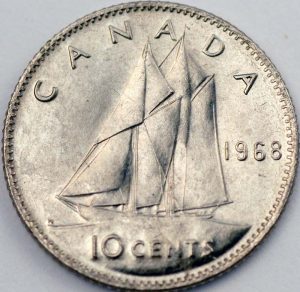
1968 Canada 10-cents coin struck by the U.S. Mint
After adding the coins struck for Iceland as part of the 2000 Leif Ericsson commemorative program and the coins struck at the Manila Mint, it appears that the Mints of the United States have produced over 10.75 billion coins and sold nearly 650 million planchets to foreign countries. That is over 11.4 billion pieces produced by the U.S. Mint from 1875 through 2000 that were not intended to circulate in the United States.
The following table shows the number of coins produced for each country:
| Country |
Number of pieces produced |
Country |
Number of pieces produced |
| Argentina (Blanks)1 |
64,058,334 |
Hawaii2 |
1,950,000 |
| Australia |
168,000,000 |
Honduras |
115,929,500 |
| Belgian Congo |
25,000,000 |
Iceland |
143,324 |
| Belgium |
25,000,000 |
Indo-China |
135,270,000 |
| Bolivia |
30,000,000 |
Israel |
91,000
|
| Brazil (Blanks)1 |
406,249,266 |
Korea |
295,000,000 |
| Canada |
85,170,000 |
Liberia |
56,744,679 |
| China |
39,720,096 |
Mexico |
91,076,840 |
| China, Republic Of (Taiwan) |
428,172,000 |
Mexico (Blanks)1 |
175,714,411 |
| Colombia |
133,461,872 |
Nepal |
195,608 |
| Costa Rica |
131,798,820 |
Netherlands |
562,500,000 |
| Cuba |
496,559,888 |
Netherlands East Indies |
1,716,368,000 |
| Curacao |
12,000,000 |
Nicaragua |
26,080,000 |
| Dominican Republic |
76,954,297 |
Panama (Republic) |
193,838,428 |
| Ecuador |
214,451,060 |
Peru |
761,067,479 |
| El Salvador |
226,695,351 |
Philippines3 |
3,690,543,252 |
| Ethiopia |
375,433,730 |
Poland |
6,000,000 |
| Fiji |
4,800,000 |
Saudi Arabia |
124,712,574 |
| France |
50,000,000 |
Siam (Thailand) |
20,000,000 |
| Greenland |
100,000 |
Surianam (Netherlands Guiana) |
21,195,000 |
| Guatemala |
7,835,000 |
Syria |
7,350,000 |
| Haiti |
90,324,000 |
Venezuela |
306,762,944 |
|
|
Blanks (planchets)
Coins
TOTAL |
646,022,011
10,754,294,742
11,400,316,753 |
Notes
1 Listings marked “(Blanks)” were those countries who purchased blanks and not struck coins.
2 Coins produced prior to Hawaii becoming a state.
3 Includes coins struck at Manila Mint.
I expected to see the number of coins struck for the Philippines to be very high. What surprised me were the volume of coins struck for the Dutch East Indies. Combine that number with the total for the Netherlands, the U.S. Mint has struck over 2 billion coins for them.
Some of the countries on the list are interesting like striking coins for Cuba until 1960, two years into Fidel Castro’s reign. France was also a surprise until I looked at the data and noticed that the coins were struck in 1944, post World War II. In 1968 and 1969, the Philadelphia Mint struck over 85 million 10 cent coins for Canada. This must have been a capacity issue by the Royal Canadian Mint which I will investigate at another time.
NOTE: For the non-technical among the readers, data normalization the process of organizing the data and making it consistent for use in a database. It makes programming easier when all of the data is consistent. Unfortunately, the data on foreign coin production from the U.S. Mint is formatted so that it can easily be printed. I am trying to fix that.
Credits
- Image of the U.S. Mint struck Canadian 10-cent coins courtesy of Canadian Numismatist Daniel W. Gosling. See this page for more information on the 1968-69 Canadian 10-cent coins.
Apr 16, 2017 | coins, education, foreign, US Mint

When looking for reference materials, there is nothing better than finding the authoritative source
Finding most of the information was easy. After searching a number of online archives and digitized publications, especially the Newman Numismatic Portal hosted at Washington University in St. Louis, most of what I was looking for was printed in the publication Domestic and Foreign Coins Manufactured by the Mints of the United States.
Although I have a printed copy, it would be easier if someone else digitized the book. After poking around a few archives, I found a digital copy and downloaded the entire image as a PDF. Although other formats were available, the PDF image was the most complete and the only one that my optical character recognition (OCR) program was successful in converting the printed page to something a computer can understand.
These printed tables have been updated ever since the Bureau of the Mint began to publish this compilation, which appears to begin around 1905. Prior, bits and pieces have been added to the Director’s report which was submitted to congress as part of a larger report by the Department of the Treasury. The problem is that the tables were created in a matter that would be easier to typeset using the technology of the time. It is not optimal for the person that wants to digitize the information.
I will spare the details, but it took more than two weeks of part-time work to extract the data and format it in a way that made sense for a computer. Even though I felt that it might have been faster to manually transcribe the data, the work will benefit future projects.
Not coincidentally, the last time the Mint published this book was in 1980, the last year they stopped striking accepting orders to strike coins for foreign countries.
The first coins struck by the Mint for a foreign government was the 1876 one centavo and 2½ centavo coins for Venezuela. In 1875, the Mint in Philadelphia struck 8 million of the one centavo and 1.5 million 2½ centavos coins for Venezuela. The composition is reported as being an alloy of copper, nickel, and zinc but there is no record of the ratio.
-

-
Venezuela 1876 Centavo (obverse)
-
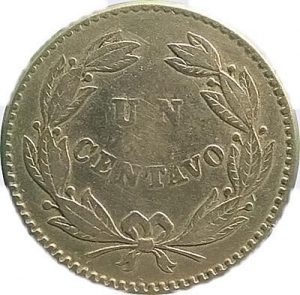
-
Venezuela 1876 Centavo (reverse)
-

-
Venezuela 1876 2½ Centavos (obverse)
-
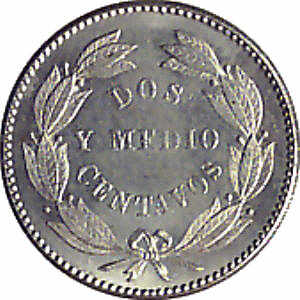
-
Venezuela 1876 2½ Centavos (reverse)
Apparently, it was common for the Mint to strike coins for foreign countries with the following year’s date. In one document, it explained that these coins were struck at the end of the year following the completion of the minting of United States coins. Since coin production and transportation was a bit slower than it is today, it allowed foreign governments to plan for their following year’s demand.
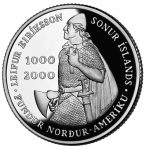
2000 Leif Ericson Icelandic Krónur Commemorative Silver Proof (Obverse)
One thing that none of these tables include are the coins struck at the Manila Mint. To help relieve the burden of making coins for the Philippines after they became a colony of the United States, the Mint was allowed to establish a branch mint in Manila. It is the only branch mint outside of the continental United States. The mint opened in 1920 and produced coins in one, five, ten, twenty, and fifty-centavo denominations. Coins struck by this mint bear either the “M” mintmark or no mintmark. The mint was closed in 1941 because of the outbreak of war.
Official records from the Manila Mint are difficult to find because they were not included in the regular Treasury reports. Using a combination of the colonial government reports to congress, which required a trip to the Library of Congress, and the Standard Catalog of World Coins, I was able to compile the data of coins produced in Manila.
Although the list is being edited for consistency in formatting (I like things accurate and pretty), the following is a summary of the coinage produced by the Manila Mint from 1920 through 1941:
| Denomination |
Composition |
Diameter (mm) |
Weight (g) |
Mintage |
| 1 Centavo |
Bronze |
5.30 |
25.00 |
142,310,195 |
| 5 Centavos |
Copper-Nickel |
4.75 |
19.00 |
32,242,041 |
| 10 Centavos |
.750 Silver, .250 Copper |
2.00 |
16.70 |
16,413,038 |
| 20 Centavos |
.750 Silver, .250 Copper |
4.00 |
21.00 |
13,123,046 |
| 50 Centavos |
.750 Silver, .250 Copper |
10.00 |
27.50 |
2,736,763 |
| Total Mintage |
206,825,083 |
When the table is completed and I figure out a way to display the data in a useful form, I will upload it for everyone to reference. I know that there will be some that would disagree with adding the mintage from the Manila Mint to those located in the United States. But the Manila Mint was owned by the United States government at a time that the Philippines was a colony of the United States and was run by administrators that were part of the Mint’s reporting structure. As the editor of the data, that is enough reason for me to include it with the rest of the data of foreign coins produced by the U.S. Mint.
Credits
- Venezuelan coin images courtesy of Monedas de Venezuela.
- 2000 Leif Ericsson Krónur Proof coin image courtesy of the U.S. Mint.
Mar 17, 2017 | BEP, Britain, celebration, coins, education

2016 Canada Lucky Four-Leaf Clover 1 oz Silver Coin
Patrick was not welcomed when he arrived but worked with the society to convert them to Christianity. Although most of his writings portrayed that he was probably more successful than he was, but after working with the people, first in the northern regions of Ireland, he did find success. He once wrote that he baptized thousands of people and some have written that he baptized hundreds on a single day. Using the native three-leaf shamrock to describe the Holy Trinity, Patrick was promoted bishop and apostle of Ireland. He died on March 17, 461 in Saul, where he founded his first church.
For thousands of years, the Irish have observed the day of Saint Patrick’s death as a religious holiday, attending church in the morning and celebrating with food and drink in the afternoon. The first St. Patrick’s Day parade was celebrated in 1762 when Irish soldiers serving in the English military marched through New York City.
With Saint Patrick’s Day, talk about “the luck of the Irish” and associate the shamrock of four-leaf clover as a lucky symbol. I was thinking if there are coins or currency that would bring you luck. After searching around online for lucky coins there was a common theme: something that is special to you. Here is a composite of the types of lucky coins:
- Coins from the year of your birth: I have helped several people buy proof and mint sets of coins from the year they were born. On one of my father’s milestone birthdays, I bought uncirculated coins from the year of his birth and had them slabbed in an NGC multi-coin holder when they were still being offered.
- Coins from a country special to you: On one of my wife’s milestone birthdays, I purchased a Canadian proof set from the year of her birth. Although she was born in the United States, her parents were from Canada and it has become a special collectible.
- Coins that have a special meaning: A friend keeps a Morgan Dollar in his top desk drawer. The desk used to belong to his grandfather who kept that coin as his “emergency dollar” during the Great Depression.
- Coins found during a happy or coincidental time: A client once showed me a 1958 Cuban peso that he found on the street in Miami that he keeps as a pocket piece. He decided that since it was the same year his family fled Cuba, it was a fortuitous find.
- Coins of a specific design: Sometimes the design may be added to the coin. I once met someone who had several Love Tokens from his relatives he says it is his family’s way of watching over him.
A silver sixpence in her shoe

1962 British Sixpence
Feng Shui

Feng Shui Coins
The number of coins tied together is important. One coin is believed to promote loneliness and will leave you empty. Two is better but does not have the power of rebirth that three does. Three coins tied together represents the heavens, earth, and mankind. Four represents death and not something that would promote Feng Shui. The Chinese do not know why five is not lucky but this is accepted. While three is considered proper Feng Shui, making it more powerful would be three-times-three, or nine, coins.
For luck, you can hang Feng Shui coins on the on the inside of your front door, not the outside. You want the luck inside. Do not hang your Feng Shui coins on your back door because it will luck to leave your house.
You can place three Feng Shui coins on top of items to bring them luck. When you do this, it is important to place the Yang side facing up to invite the luck to protect your item. The Yang side is the side with the four characters.
When giving a gift, attach three Feng Shui coins to the package to bring double happiness. It tells the recipient that with the gift you are also wishing them wealth, prosperity, and happiness. Doing this will add to your Feng Shui for giving generous and unselfish wishes.
Numerology and currency
Numerology is the belief in the divine or mystical relationship between numbers and the physical world. Many people practice a mild form of numerology called a “lucky number.” For those who believe in some type of numerology can turn to the serial number of currency to add to their collection.
One of the more expensive aspects of notaphily is the collection of patterns numbers. Typical patterns are as follows:
- Solid: every digit the same
- Ladder: numbers that count up, like 12345678, or down, like 98765432
- Low or High numbers
- Radar numbers: when the serial number repeats forward and backward, like 12344321
- Repeater numbers: when the serial number is repeated, like 12341234
- Super Repeater: pairs of numbers that repeat four times, like 36363636
- Double Quad: two pairs of four numbers, like 88889999
- Seven of a kind: both in a row or seven of the same number
Notes that represent dates can bring luck such as one that has your birthdate. For someone born on March 17, 1977, finding a note with the serial number 03171977 or even 19770317 could be very lucky. Since the numbers reset for every series and there are 12 Federal Reserve branches used as a prefix, you have quite a few chances of finding these.

$1 Lucky 777 Note
The BEP also sells lucky money that includes the Lucky 7 set. These notes have a serial number that begins with three 7s. You can also buy notes in special Chinese holders with serial numbers that begin with “8888” and “168.” In Chinese, the “eight” sounds similar to the word for “prosper” or “wealth.” Selling the Lucky 8888 note is to help promote prosperity and wealth.
The “168 Prosperity Forever” note plays on the Mandarin pronunciation of the number that sounds similar to “prosperity forever.” If the BEP used the Cantonese pronunciation, they would have the use the serial numbers beginning “768.”
Go find your lucky coin and may you have health and prosperity.
Credits
- Canadian coin image courtesy of the Royal Canadian Mint
- Sixpence image courtesy of Wikipedia
- Feng Shui coins image courtesy of eBay user “technology-onsale“
- Lucky 777 Note courtesy of the Bureau of Engraving and Printing
Feb 4, 2017 | Canada, coins, education, video
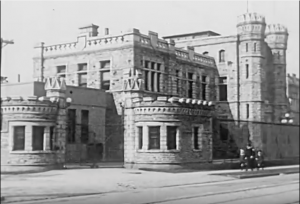
1920 Image of the Royal Canadian Mint in Ottawa
Take the video below, for example. It is titled “How money is Made” and appears to have been made for the Royal Canadian Mint by a company called Mogull Brothers Film Library in New York.
A quick bit of Internet research shows the company was founded and run by Charles Mogull (1898-1986) in Brooklyn, New York. Mogull Brothers were one of the early content creation pioneers. They would shoot a film on various subjects, edit them into smaller features, and sell the features to companies that would use them in larger compilations. Their content would be everything from features like the one they created for the Royal Canadian Mint, news events, interviews, show promotions, etc. and footage they would buy from photographers. The little information I could find on Mogull suggests that the company ceased operation in the late 1950s.
As for the film, the architecture of the original Royal Canadian Mint in Ottawa looks like a castle. I believe I read somewhere that the Royal Canadian Mint still uses the building as storage. To see this marvelous looking structure and to visit the Mint appears to be a good excuse to visit the Canadian capital.
It is a silent film that the person who posted it to YouTube added music. Even with the music, you can see how film technology has changed. Rather than being able to overlay the wording over the image, a process called keying, printed cards are used to describe the content and spliced into the film.
At the moment the film shows the making of the dies, they show the dies of a 1920 Canadian one cent coin with the image of George V. It was under George V, shortly after his ascension to the throne, that the Parliament Act 1911 transferred a lot of governing power to the House of Commons and started the erosion of monarch’s power.
Although we are well into the industrial revolution, the mix of automation and human interaction is fascinating. For example, starting around the 8-minute mark, there is a man bouncing the coins listening for its distinctive ring that silver coins make when bounced on a hard surface. Nowadays, machines with sensors and computers check the coins for quality. Even circulating coins are rarely touched by human hands.
Finally, as a little comic relief, when the film shows the title cards, look in the lower right corner at the graphics they chose to use. The filmmaker tried to use the graphics to emphasize something about what you will see next.
Now enjoy the show:
Oct 22, 2016 | advice, ANA, commentary, education, errors, exonumia
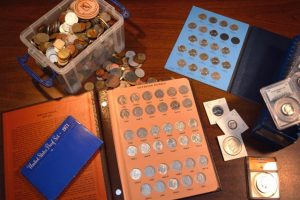 Although I owe you my impressions of the U.S. Mint’s Numismatic Forum, giving it the proper treatment I think it deserves has taken longer than expected. Rather, let me jump ahead to a recurring theme that takes over the conversation on the state of the hobby: Numismatics is a dying hobby of the old.
Although I owe you my impressions of the U.S. Mint’s Numismatic Forum, giving it the proper treatment I think it deserves has taken longer than expected. Rather, let me jump ahead to a recurring theme that takes over the conversation on the state of the hobby: Numismatics is a dying hobby of the old.
MYTH: Electronic transactions have taken over and hard currency is being used less.
FACT: Electronic transactions make up only 13-percent of retail purchases in the United States and 7.1-percent worldwide. Although the pundits like to point out that trillions of dollars change hands electronically, this includes non-consumer-related transactions such as bank transfers from one account to the other using the Automated Clearing House (ACH). If your paycheck is deposited directly into your account, it is transferred using the ACH system.
In real money, the International Monetary Fund estimates that the U.S. Gross Domestic Product (GDP), the total costs for all goods and services, to be $18,561,934,000,000 ($18.561 trillion). If 13-percent of that is electronic retail purchases, that means that $2,413,051,420,000 ($2.413 trillion) is made not using cash. What about the other $16.1 trillion dollars?
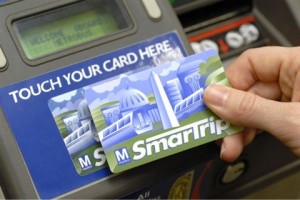 Depending on which report you read, electronic transactions should grow at a rate of 8-10 percent annually. Even if the U.S. GDP is on a pace to grow by only 1.4-percent, adding about $250 billion in electronic transactions will not make a significant dent in the rate of electronic transactions.
Depending on which report you read, electronic transactions should grow at a rate of 8-10 percent annually. Even if the U.S. GDP is on a pace to grow by only 1.4-percent, adding about $250 billion in electronic transactions will not make a significant dent in the rate of electronic transactions.
Of course, the U.S. are not spending $16 trillion in cash transactions, but both the U.S. Mint and the Bureau of Engraving and Printing are on course for record production years. Year-to-date, the U.S. Mint has produced $870,133,500 in circulating coins (not including half-dollar, dollar, and commemorative coins). For Fiscal Year 2015 (October 2014-September 2015) the BEP produced $166,302,000,000 ($166.302 trillion) in currency (not including $2 notes). Although some of the currency does replace worn notes (the BEP reports that 90-percent of $1 notes replace damaged notes) and a significant portion of the $100 notes are shipped to banks overseas, which represents quite a number of transactions.
Although electronic payment options make up 13-percent of all cashless transactions you have to remember that this market barely existed a few years ago. Even as banks and large retailers push to increase the number cashless transaction, there are problems that society faces when moving to a cashless retail system. The biggest problem is one of scale. The United States makes more money, spends more money, trades more money, and has more economic impact than any other country in the world. It is the world’s single largest economy with a strong capitalistic culture where most of the commerce is done with small businesses. Amongst all business, 55-percent of retail merchants are cash-only enterprises. They are too small to consider paying the 3-to-5 percent fees for using a credit card, known as the “swipe fee.” Of those that do take credit cards, at least 36-percent require a minimum purchase.
MYTH: The sharing economy is turning the economic world upside down changing the way we will pay for goods and services.
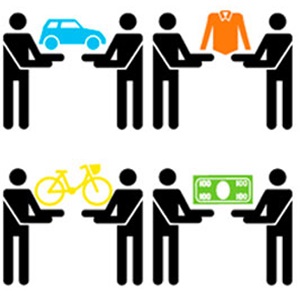 FACT: Human beings have been sharing and trading goods and services from the dawn of time. You killed an ox and have the hide left over. I have a lot of fruit I picked that I cannot eat. I will give you an amount of fruit and you give me the hide. Money was created as a medium of exchange when I did not want your fruit but wanted some of the goods someone else had. It was the pre-historic version of the three-way trade.
FACT: Human beings have been sharing and trading goods and services from the dawn of time. You killed an ox and have the hide left over. I have a lot of fruit I picked that I cannot eat. I will give you an amount of fruit and you give me the hide. Money was created as a medium of exchange when I did not want your fruit but wanted some of the goods someone else had. It was the pre-historic version of the three-way trade.
Some of us grew up trading. I remember trading a Mickey Mantle baseball card for a Jerry Koosman and two Donn Clendenon cards —one from Houston and the other from Montreal, just after the Mets traded for Clendenon. I thought I gave the kid a deal because 1969 turned out to be Mantle ’s last year.
What has changed since I made the trade? There has been a tremendous change in technology. While we set the price for the baseball cards we traded, now there are price guides, electronic markets, auctions, and online trading sites. Even in other categories, you might place a classified ad in a newspaper or an advertising rag like PennySaver or something like Uncle Henry’s in Maine. Now there are sites like Craigslist, AirBnB, Uber and Lyft that expands the market.
Pundits like to point to the sharing economy’s growth. The problem with the reports is that this version of the sharing economy has gone from nothing to something with a lot of press coverage. Anytime there is something shiny and new it grabs the attention of the public before they move on to the next distraction.
We share numismatics all of the time. We go to shows and display our collections for competitions. We enter registry sets to try to create a nice collection or even worst collection with the advent of “low ball” sets of coins of very low grades. We blog and read about other’s collections. We post finds to public forums and sometimes bring our collections to show off at club meetings.
Sometimes we even trade. Have you traded a few Barber dimes for a Barber half because you needed the half for your collection? How about three Morgan dollars for an elusive 1921-S Walking Liberty half-dollar?
The only difference between this and the new sharing economy is the lack of computer interface. Sometimes that human interaction is more fun than hiding behind a screen.
MYTH: People, especially millennials are not interested in collecting anything.
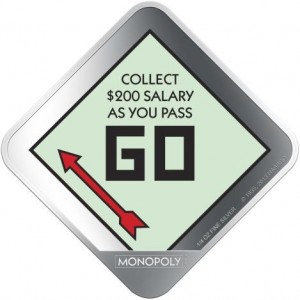
New Zealand Mint produces Monopoly coins for the Island nation of Niue. Did you pass Go?
One of the fastest growing sectors of this market is board games. While some games do incorporate electronics into their play, this new generation of gamers is finding that social gaming can be as much fun as their online endeavors.
Numismatics has never been a welcoming hobby for the mid-to-lower level collector. Dealers who are older may have a difficult time relating to younger and, frankly, a non-white demographic (see my post about one such incident here). It has created a culture of cranky older Caucasian collectors who think that their way is the only way to collect.
It is not just the dealers. Mainstream publishers put a lot of effort into creating references and collecting supplies that satisfy the market as being pushed by the dealers. Even worse, while the American Numismatic Association does recognize other aspects of numismatics, the fact that most of the Board of Governors are in the coin business with years of experiences in the coin business, that becomes the focus of the ANA.
It is time for the industry and its representative organization, the ANA, to remember that numismatics is more than coins. Currency, exonumia, scripophily, and even military medals are all part of numismatics. Concentrating on coins, especially coverage of high-value sales scares off many novices who may be willing to look at coins as a hobby. When I go out to schools in the Washington, D.C. metro area, I will bring enough Metro (the local transit system) tokens for everyone in the class. After buying a bulk bag of tokens, I have plenty to give away along with the story of how they were once used. But it allows me to show the students that numismatics is more than coins. I explain how I sit at junk boxes and at the tables of token dealers to find items from my hometown of New York. When I show them four pages of 2x2s with tokens and medals from New York and say that in three years I may have spent as much as $200, they seem to understand that you can have fun without spending a lot of money.
MYTH: We lost those who collected the state quarters forever.
 FACT: We also retained a lot of those collectors. Unfortunately, we damaged many others.
FACT: We also retained a lot of those collectors. Unfortunately, we damaged many others.
What made the state quarter program popular was that the way it was administered made everyone a stakeholder. Rather than dictating the design, states were encouraged to allow public participation to help decide on their quarter’s design. Contests and state pride went into the quarters that allowed each state to celebrate their home state. Ordinary people were brought into the process and ceremonies held in each state announcing the designs and on the release of the quarters.
Of course, the state quarters were also the hobby’s demise as television hucksters sold overpriced junk surrounding the sets. Colored coins and “special” sets were sold at high prices with the hint that they would only increase in value. When these people tried to cash in on their “investment” they found they overpaid, became angry, and may not come back. During this time, the ANA was nearly non-existent in the education process as it was undergoing its own internal political battles. Without someone to help stand up for the hobby to help educate the public, the industry suffered.
Although the ANA has improved in many areas, it continues to be about coins with a slant toward classic (pre-1965) and rare coins. The only modern coins that seem to get any amount of respect from the community are commemoratives, bullion, and errors. With the so-called modern era being 52 years old, it is time for the old and crusty of the numismatics industry to either get on board with that it is new to the new collectors or maybe it is time to consider retirement.
The lesson I have learned in numismatics as well in my business of buying and selling collectibles is that in order to expand any hobby it has to be made into something personal. Sports collectibles sell memories of your heroes. Space collectibles sell the mystique of outer space. Automobilia seems to have a fascination for a lot of people even as what was considered modern nameplates like Plymouth and Pontiac have gone the way of DeSoto and American Motors.
Hobbies have to also be interesting. Is it really interesting to collect a series of all of the same coins where the only difference is the date or mintmark? Again, why does a collection have to be biased for coins? Can someone have fun collecting So-called dollars, transportation tokens, or even unusual coins? I think about how much fun Charmy Harker might have had to put together her award-winning exhibit Penny Potpourri with things made out of pennies. If you have not seen her exhibit, you can find images here. It has to be one of the best exhibits I have ever seen because it is unusual. I like things that are different.
In order to get people interested in the hobby, you cannot introduce it to them by showing a 1909-S VDB Lincoln cent or a 1937-D 3-Legged Buffalo nickel as an example. Not only are these coins difficult to find and less affordable, but not everyone may be interested. I like to use my two-pages of 2×2 holders with a set of transportation tokens with every letter of the alphabet cut out of the center, except “Q” and “Z,” along with some that have shapes. When I tell someone I paid around $50 for the initial investment and can buy most tokens for less than $5 each, they want to know how they could get started.
Here are some ideas to help you start a new collection. You can only use these if you do so by recruiting a friend or relative who is not currently part of the hobby:
- If you want to start with coins, go find a folder of currently circulating coins and see who can fill their folder first only from pocket change. I recommend either Lincoln Memorial cents, which can be interesting finding S-mint circulating cents on the east coast, or Jefferson nickels (for fun, use Whitman Jefferson Nickel folder #2).
- Another idea for collecting coins is to make a collection based on a theme. Ideas for themes can be the year you were born, coins with an animal like buffalos, or create a type set that represents some of the subtle changes in a long series like Lincoln cents.
- There are more to exonumia than transportation tokens. If your state issued tax tokens in the early part of the 20th century then how about finding examples for a collection. Tokens are still being created for gaming, casino chips, parking tokens, or store tokens the pre-cursor to paper coupons. Advertising tokens can be a fun way to collect your hometown. Tokens with themes, shapes, and cutouts can be a lot of fun.
- Go beyond tokens to encased coins. Encased coins have been used as a private commemorative, advertising, and I even found one for an electric supply company that promised money off if you returned it to their store.
- You can collect elongated cents, also called squished pennies, from almost anywhere. Recently, I found a machine in the Philadelphia Mint’s gift shop. For 51-cents, each I was able to buy two souvenirs. Collecting elongateds also helps you keep the record of where you have been.
And I didn’t mention currency or scripophily. One cool idea would be to collect stock certificates representing what you might find on a Monopoly game board.
If you have other suggestions, send it as a comment!
Now go out and start a collection. Recruit a friend and do it together.
Selection of my New York collection
-
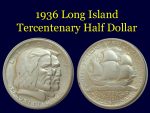
-
1936 Long Island Tercentenary Half-Dollar
-

-
1983 Brooklyn Bridge Centennial Medal issued by Brooklyn Union Gas
-

-
Medal from the opening of the Brooklyn Bridge in 1883
-

-
1956-D Encased Cent from the Chase Money Museum
-

-
A check from the First National Bank of Inwood (NY)
-
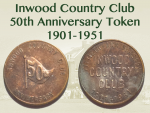
-
50th Anniversary medal from the Inwood Country Club.
-
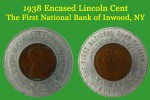
-
1938 Encased Cent from the First National Bank of Inwood (NY)
-

-
1984 LIRR Sesquicentennial Bronze Medal
-

-
TBTA Toll Token
-

-
Reverse of the Triborough Bridge and Tunnel Authority Rockaways resident token.
-
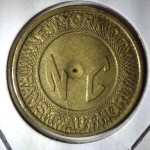
-
New York City Type 2 Subway Token error. It’s missing the punched out “Y”
-

-
2000-P New York quarter with Daniel Carr’s autograph on ICG label
-
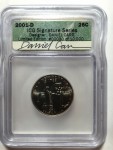
-
2000-D New York quarter with Daniel Carr’s autograph on ICG label
-
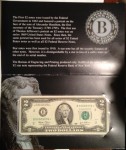
-
Series 2003 $2 Star Note from the Federal Reserve Bank of New York. Rosario Marin/John Snow signatures.
-

-
Series 2013 Uncirculated $1 Federal Reserve Note from the Federal Reserve Bank of New York
-

-
A&S Charge Token with account number
 Collecting can be an expensive hobby regardless of what is collected. Whether it is numismatics or comic books, one piece is never enough and there is always a desire to collect an entire set regardless of the parts that make up the set.
Collecting can be an expensive hobby regardless of what is collected. Whether it is numismatics or comic books, one piece is never enough and there is always a desire to collect an entire set regardless of the parts that make up the set.






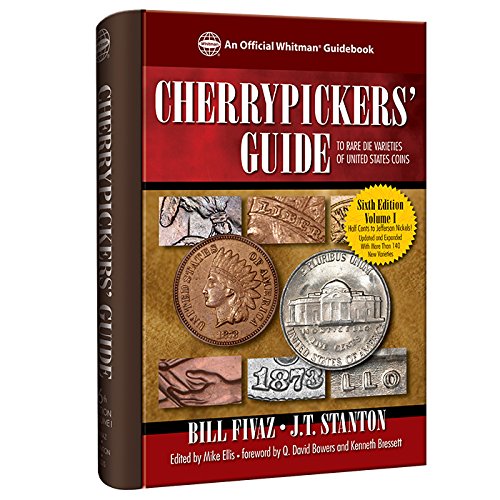




















 Depending on which report you read,
Depending on which report you read, 


















